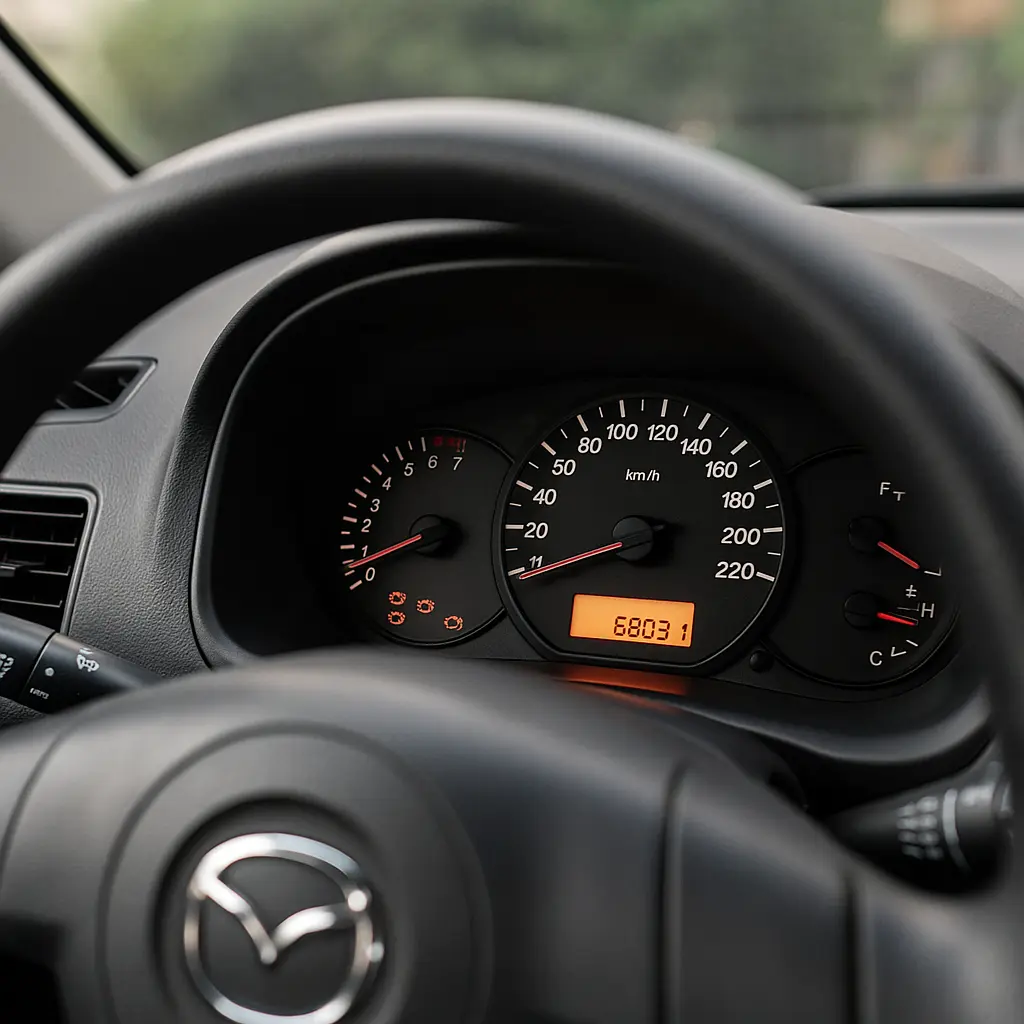🚗 How to Spot Odometer Fraud When Buying Used in 2025

Introduction
Buying a used car in Australia is a smart move for budget-conscious drivers—but with savings comes risk. One of the most deceptive tricks in the second-hand car market is odometer fraud—also known as odometer rollback or mileage tampering.
Despite Australia’s advancements in digital vehicle tracking, odometer fraud hasn’t disappeared—it’s just evolved. In 2025, scammers have more sophisticated tools and digital loopholes to exploit unsuspecting buyers.
In this detailed guide, we’ll unpack everything you need to know about mileage fraud:
- What it is
- How common it is in Australia
- Signs to look for
- Tools and databases to verify mileage
- Legal consequences and buyer protection tips
Whether you're buying privately, from a dealership, or online—this article arms you with knowledge to avoid costly mistakes.
📉 What is Odometer Fraud?
Odometer fraud refers to any act of falsifying a vehicle’s odometer reading to make it appear that the car has travelled fewer kilometres than it actually has. This deception boosts the resale value and hides wear-and-tear.
Fraud can happen in several forms:
- Manual rollback: Old-school tampering with mechanical odometers.
- Digital manipulation: Modern cars with digital odometers can be reprogrammed using diagnostic tools.
- Odometer replacement: Replacing a high-mileage cluster with one from a lower-mileage car.
- Tampering with service logs: Altering or fabricating service records to align with the fake mileage.
🇦🇺 Is Odometer Fraud Still a Problem in Australia?
Absolutely. While Australia has strict vehicle compliance and registration systems, mileage fraud persists—especially in private sales and grey imports.
Data Snapshot (2024–2025):
- Over 5,000 reported cases of odometer fraud in used car sales.
- Most tampered vehicles are between 5–10 years old.
- Estimated $50M+ lost annually by Australian car buyers due to mileage scams.
Scams tend to spike on classifieds websites, private marketplaces, and dodgy car yards that sell high-mileage imports or auction cars.
🧠 Why Odometer Readings Matter
Mileage is often the first metric a buyer checks when evaluating a used car. Here's why it’s important:
- Depreciation: High-mileage cars depreciate faster.
- Wear & Tear: Critical components like engines, transmissions, and suspension wear with use.
- Service Intervals: Maintenance schedules rely on accurate mileage readings.
- Resale Value: A car with falsified mileage may face legal issues or heavy losses during resale.
In short, odometer fraud can affect safety, reliability, and your wallet.
🚩 Common Red Flags: Signs of Odometer Rollback
Knowing the warning signs can save you from buying a lemon. Here are 10 things to look for when inspecting a used car:
1. ✍️ Service Records Don't Add Up
Always check the logbook or online service history. Look for:
- Skipped entries
- Illogical gaps
- Odometer readings that go backward
2. 🛠️ Excessive Wear on a “Low KM” Car
Compare claimed mileage with vehicle condition:
- Worn steering wheels or gear knobs
- Pedal rubbers with heavy wear
- Sagging driver seat
- Chipped keys or faded buttons
A car showing 60,000 km shouldn’t look like it’s done 160,000.
3. 🧾 Inconsistent Registration and Inspection Records
Use services like:
- NSW Service NSW rego check
- VICRoads vehicle status check
- PPSR report
Check for mileage logs during inspections and registrations.
4. 📱 OBD Diagnostic Data Doesn’t Match
Professional mechanics can extract stored data from the vehicle’s on-board diagnostics (OBD) system, which often records true mileage—even if the dashboard has been tampered with.
5. 📦 Parts Replaced Too Soon
Look for newer parts that don’t match the mileage:
- Recently replaced clutch, radiator, or suspension on a “low KM” car? Be cautious.
6. 📷 Online Listing Changes
Sellers often update mileage between platforms. Use archive tools or screenshots to compare past listings.
7. 🌍 Imported Cars with Suspicious Histories
Japanese and European imports are more prone to odometer rollback. Make sure to get an import compliance and odometer verification certificate.
8. 👨🔧 Dodgy Dealers with No Background
If the seller:
- Can’t produce logbooks
- Pushes for fast cash
- Avoids letting you take the car to an independent mechanic
→ Walk away.
9. 🧾 Missing PPSR Certificate
Every used car purchase should come with a PPSR report. It verifies:
- Odometer readings (if declared)
- Finance owing
- Written-off status
10. 📞 Previous Owners Tell a Different Story
Ask the seller for contact details of the previous owner (if private sale). A quick call can reveal discrepancies.
🔎 How to Properly Verify Odometer Readings
Don’t rely solely on your gut. Use verified tools and methods to check mileage:
✅ 1. PPSR (Personal Property Securities Register)
- Official government platform.
- Costs ~$2.
- Shows if vehicle has finance, is stolen, or written off.
- May include declared odometer readings.
Link: ppsr.gov.au (don't hyperlink on your blog)
✅ 2. State-Based Rego Checks
- VIC: vicroads.vic.gov.au
- NSW: service.nsw.gov.au
- QLD: qld.gov.au/transport
- SA/WA/TAS: Each has separate check tools.
Look for service intervals, emissions test logs, and previous roadworthy inspections.
✅ 3. Independent Pre-Purchase Inspection
Hire a mobile mechanic or inspection company to:
- Read OBD data
- Assess wear and tear
- Flag suspicious changes
Price: $150–$250. Worth every dollar.
✅ 4. Manufacturer Service Portals
Some car brands offer online access to verified service records. Examples:
- Toyota Link
- MyHyundai
- BMW ConnectedDrive
Register the VIN and check service entries.
✅ 5. Auction House Reports
If the car came from a fleet, ex-government, or auction background, request its condition report or run sheet.
💰 Why Sellers Commit Odometer Fraud
Understanding the motives helps spot high-risk sellers:
| Reason | Description |
|---|---|
| 💵 Inflate Resale Value | Rolling back 100,000km can add $3K–$10K to resale |
| 🧼 Hide Wear | Makes a tired vehicle look like a great deal |
| 🤐 Quick Flips | Unscrupulous flippers use it to offload junk |
| 🔧 Lower Perceived Risk | Buyers assume lower mileage = fewer repairs |
| 📉 Resale Scams | Prepares the car to be sold again quickly |
⚖️ Legal Consequences of Odometer Fraud in Australia
Odometer tampering is a criminal offence under Australian Consumer Law.
Penalties:
- Up to 10 years imprisonment for individuals
- Heavy fines up to $220,000+
- Civil suits and forced buybacks
- Damaged reputation for businesses
Who's Liable?
- The seller is responsible, but
- Dealers carry higher liability than private sellers
- Buyers have limited recourse if they don’t check properly
🛡️ How to Protect Yourself as a Buyer
Here’s a step-by-step checklist:
- Check PPSR
- Request full service history
- Look for physical wear signs
- Get a pre-purchase inspection
- Confirm with previous owners
- Use state rego and VIN lookup tools
- Walk away from shady sellers
🧠 Advanced Tips for 2025 Buyers
📱 Use AI-Based Car History Apps
Some Australian startups offer AI-driven tools that compare:
- Auction photos
- Listing archives
- OBD data
- GPS data
Examples: CarHistory AI, VinCheck Australia (no links to include)
🔄 Use Digital Logbooks
Ask if the car uses a digital logbook via apps or portals. These are harder to fake than paper ones.
🌍 Avoid Grey Imports Unless Verified
Only buy imports with:
- Verified odometer certificate
- RAWS compliance
- Matching Japanese auction report (for JDM vehicles)
🤔 Should You Avoid Buying Used?
Absolutely not. Used cars still offer huge value if you’re careful. But you must:
- Buy smart
- Check records
- Inspect thoroughly
🧾 Real-World Case Study (2024)
Case: Melbourne man bought a 2016 Mazda 3 claiming 68,000km.
Reality: The OBD revealed 212,000km.
Result: $8,500 loss. Seller vanished. No legal recourse.
📋 Summary: Top 10 Takeaways
- Odometer fraud is still a problem in 2025.
- Most frauds happen in private sales and grey imports.
- Look for inconsistencies in service records and wear patterns.
- Use PPSR, rego checks, and pre-purchase inspections.
- Never buy a used car without a VIN check.
- Be wary of too-good-to-be-true deals.
- Ask for digital logbooks if available.
- Avoid buying from rushed or evasive sellers.
- Use AI tools and GPS data to detect tampering.
- Protect yourself with due diligence—not luck.
Leave a comment
Your email address will not be published. Required fields are marked *




















